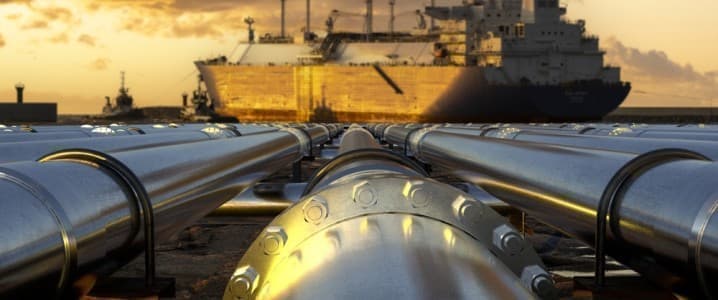
For the first time ever, the European Union imported in June more LNG from the United States than gas via pipeline from Russia, as Moscow slashed supply to Europe in the middle of last month.
Going forward, demand for U.S. LNG is set to remain robust as Europe races to reduce its dependence on Russian pipeline gas.
In the U.S., LNG export capacity is growing as new trains at Sabine Pass and Calcasieu Pass came online this year. But in order to continue growing, the LNG industry will need more domestic midstream infrastructure - pipelines - to carry natural gas from production centers to LNG export terminals on the U.S. Gulf Coast and demand centers on the Eastern Seaboard.
The Marcellus-Utica basin, the largest U.S. gas-producing region, and the second biggest gas-producing shale region, the Permian, could soon run into pipeline constraints that could undermine America’s ability to raise its LNG exports, energy analyst David Blackmon writes in Forbes.
The Federal Regulatory Energy Commission (FERC) hasn’t raced to approve pipeline projects, while the mixed messages from the Biden Administration continue to add uncertainties for upstream and midstream operators.
There’s also opposition from communities to pipelines crossing their land or passing close to their homes.
Such is the case with the Matterhorn Express Pipeline, designed to transport up to 2.5 billion cubic feet per day (Bcf/d) of natural gas through approximately 490 miles from Waha, Texas, to the Katy area near Houston, Texas. The pipeline developers WhiteWater, EnLink Midstream, Devon Energy, and MPLX LP reached a final investment decision in May to move forward with the construction of the pipeline, expected to be in service in the third quarter of 2024, pending the receipt of customary regulatory and other approvals.
But landowners in Williamson County, where the pipeline is planned to cross, are worried about the impact of the pipeline on their properties, although the county hosts at least a dozen pipelines already. Some Williamson County residents have asked the pipeline developers to reroute some parts of the project.
“Williamson County lies in the most direct path from Midland to Freeport,” County Commissioner Russ Boles told Austin American-Statesman.
The industry, for its part, calls for streamlined approval of pipeline projects that would help bring more gas to U.S. demand centers and LNG export facilities.
There are currently 11 major natural gas projects pending approval before the FERC, more than half of which have their final environmental documents, the Interstate Natural Gas Association of America (INGAA) said at the end of March 2022, days after the U.S. and the EU announced a deal for more U.S. LNG exports to the EU as the latter seeks to replace Russian supplies.
“FERC’s approval is the imperative next step for these important projects. Without the additional capacity, which totals more than 12,141 MMcf/day pending currently, some of the added gas supply policymakers are calling on developers to produce will not reach American consumers or LNG terminals along U.S. coasts for export,” INGAA said.
The American Petroleum Institute (API) has a ten-point plan to restore U.S. energy leadership. This plan includes a recommendation that the FERC “should cease efforts to overstep its permitting authority under the Natural Gas Act and should adhere to traditional considerations of public needs as well as focus on direct impacts arising from the construction and operation of natural gas projects.”
U.S. LNG exports are set to decline in the second half of 2022 because of the outage at Freeport LNG, the EIA said in its latest Short-Term Energy Outlook (STEO) on Tuesday. U.S. LNG exports are forecast to average 10.5 Bcf/d in the second half of 2022, which is 14% less than the forecast in the June 2022 STEO.
The EIA expects LNG exports will grow in 2023, averaging 12.7 Bcf/d on an annual basis, or 17% higher than in 2022.
The U.S. will need pipelines and a federal policy supporting such projects in order to continue growing LNG exports and delivering gas to the domestic demand centers.